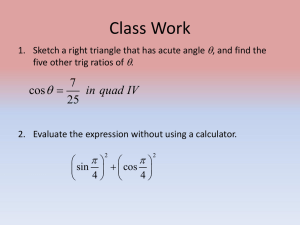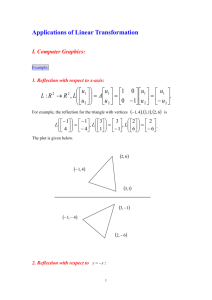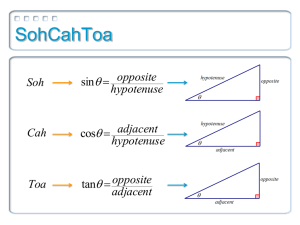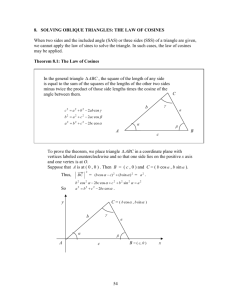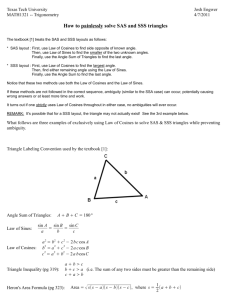Proof of the Law of Sines and the Law of Cosines
advertisement
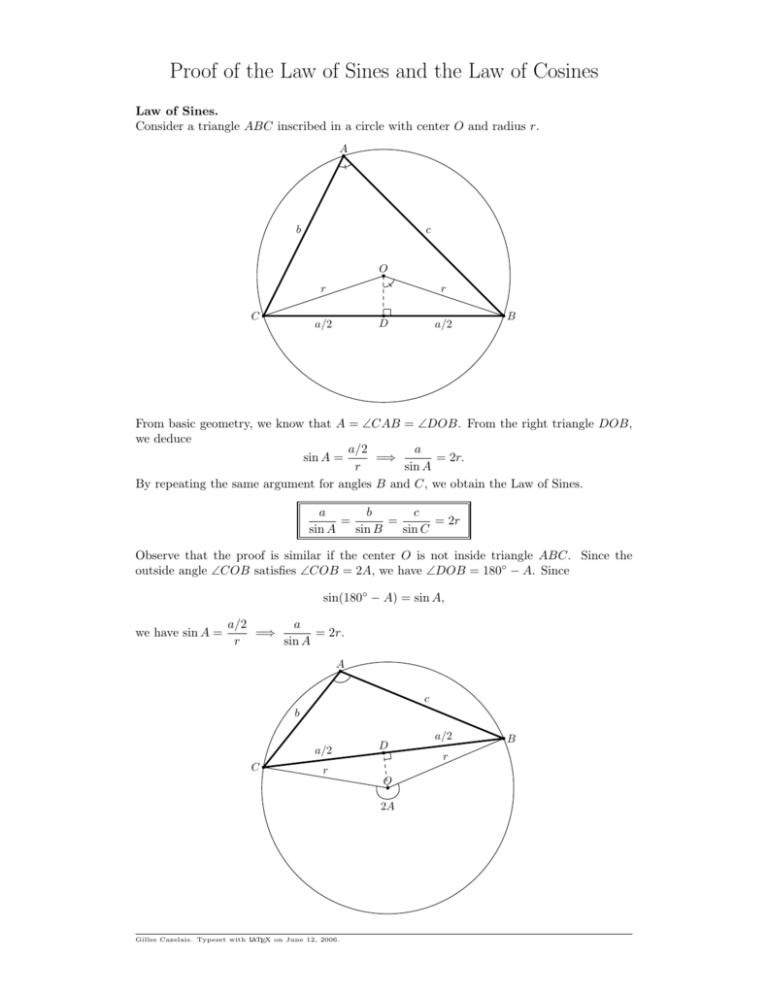
Proof of the Law of Sines and the Law of Cosines Law of Sines. Consider a triangle ABC inscribed in a circle with center O and radius r. A b c O r C r D a/2 a/2 B From basic geometry, we know that A = ∠CAB = ∠DOB. From the right triangle DOB, we deduce a/2 a sin A = =⇒ = 2r. r sin A By repeating the same argument for angles B and C, we obtain the Law of Sines. a b c = = = 2r sin A sin B sin C Observe that the proof is similar if the center O is not inside triangle ABC. Since the outside angle ∠COB satisfies ∠COB = 2A, we have ∠DOB = 180◦ − A. Since sin(180◦ − A) = sin A, we have sin A = a/2 a =⇒ = 2r. r sin A A c b a/2 a/2 C D r r O 2A Gilles Cazelais. Typeset with LATEX on June 12, 2006. B Law of Cosines. Consider the following triangle ABC. C b a h A B D x c−x From the right triangle ADC, we deduce x2 + h2 = b2 (1) and x =⇒ x = b cos A. b From the right triangle BDC, we deduce cos A = (c − x)2 + h2 = a2 =⇒ a2 = c2 − 2cx + (x2 + h2 ). (2) (3) Substituting equations (1) and (2) into (3), we get a2 = c2 − 2c(b cos A) + b2 which is the Law of Cosines. a2 = b2 + c2 − 2bc cos A The proof is similar if angle A is obtuse. C a h b D A c B x From the right triangle ADC, we deduce x2 + h2 = b2 and cos(180◦ − A) = − cos A = x =⇒ x = −b cos A. b (4) (5) From the right triangle BDC, we deduce (c + x)2 + h2 = a2 =⇒ a2 = c2 + 2cx + (x2 + h2 ). Substituting equations (4) and (5) into (6) gives the Law of Cosines. (6)


